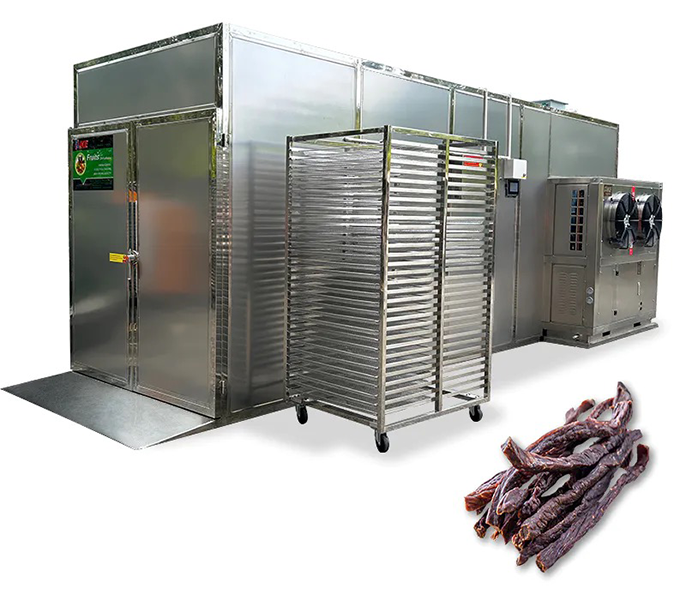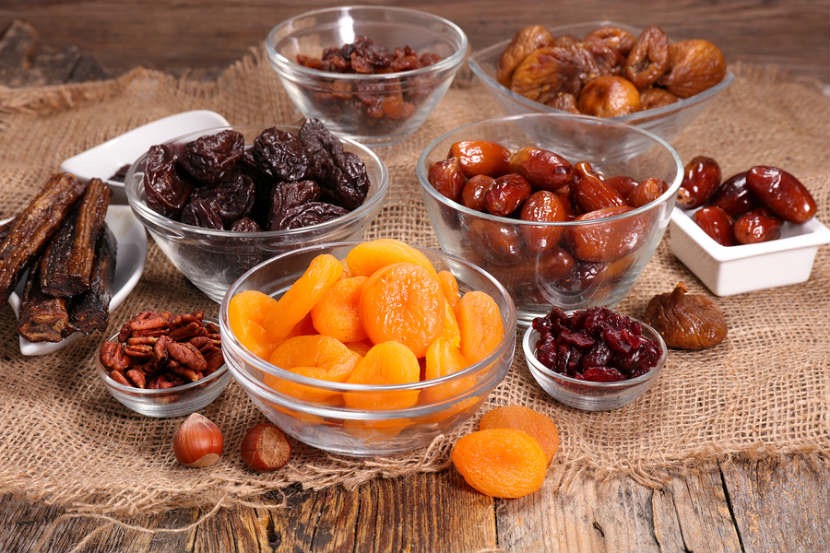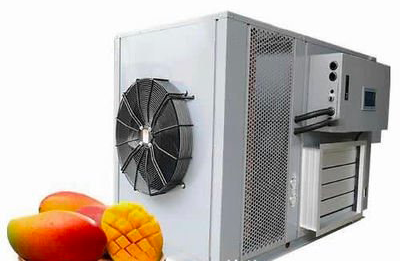
Content Menu
● Introduction
● Understanding Heat Pump Dryers
>> Benefits of Heat Pump Dryers
>> How Heat Pump Dryers Differ from Traditional Dryers
● Key Features to Consider
>> Capacity
>> Temperature Control
>> Humidity Control
>> Energy Rating
>> Durability and Build Quality
>> Noise Level
● Types of Heat Pump Dryers
>> Commercial Heat Pump Dryers
>> Home Heat Pump Dryers
>> Industrial Heat Pump Dryers
● How to Choose the Right Model
>> Assess Your Needs
>> Research Brands and Models
>> Consider After-Sales Support
● Installation and Maintenance Tips
● Common Applications of Heat Pump Dryers in Food Processing
● Conclusion
● Frequently Asked Questions (FAQ)
>> 1. What is a heat pump dryer?
>> 2. How does a heat pump dryer work?
>> 3. What foods can I dry using a heat pump dryer?
>> 4. Are heat pump dryers energy-efficient?
>> 5. How often should I maintain my heat pump dryer?
Introduction
Choosing the right heat pump dryer is crucial for achieving optimal results in food drying. Heat pump dryers are known for their energy efficiency and ability to preserve the quality of food. This article will guide you through the essential factors to consider when selecting a heat pump dryer, highlighting various features, benefits, and potential applications in food processing.

Understanding Heat Pump Dryers
Heat pump dryers utilize a refrigeration cycle to remove moisture from food products. They operate by circulating warm air through the drying chamber, absorbing moisture from the food, and then expelling the humid air while recycling the warm air back into the system. This method is not only energy-efficient but also helps maintain the nutritional value and flavor of the food being dried.
Benefits of Heat Pump Dryers
- Energy Efficiency: Heat pump dryers consume less energy compared to traditional drying methods, making them cost-effective in the long run.
- Quality Preservation: They operate at lower temperatures, which helps in retaining the nutrients and flavors of the food.
- Versatility: Suitable for a wide range of food products including fruits, vegetables, herbs, and meats.
- Environmentally Friendly: Reduced energy consumption leads to lower carbon emissions.
How Heat Pump Dryers Differ from Traditional Dryers
Heat pump dryers differ significantly from traditional dryers such as convection or microwave dryers. Here's a comparison:
| Feature | Heat Pump Dryer | Traditional Dryer |
| Energy Consumption | Low | High |
| Temperature Control | Precise and adjustable | Often fixed |
| Moisture Removal | Efficient with humidity control | Less efficient |
| Nutrient Preservation | High | Moderate to low |
| Initial Cost | Higher upfront cost | Generally lower upfront cost |
Key Features to Consider
When selecting a heat pump dryer, consider the following features:
Capacity
The capacity of a heat pump dryer is crucial depending on your production needs. It is measured in kilograms (kg) of food that can be dried at one time. Ensure that the dryer can handle your expected volume without compromising quality.
Temperature Control
Look for models with adjustable temperature settings. This feature allows you to tailor the drying process according to different types of food, ensuring optimal drying conditions.
Humidity Control
Humidity control is essential for effective drying. A good heat pump dryer should have sensors that monitor humidity levels and adjust the drying process accordingly. This ensures that food is dried evenly without over-drying or under-drying.
Energy Rating
Check for energy efficiency ratings. A higher rating indicates lower energy consumption, which translates into cost savings over time. Many manufacturers provide an energy label that can help you compare models easily.
Durability and Build Quality
Invest in a heat pump dryer made from high-quality materials that can withstand continuous use. Stainless steel construction is often preferred for its durability and ease of cleaning. Additionally, check for features like insulated doors and robust seals that enhance efficiency.
Noise Level
Consider the noise level of the dryer, especially if it will be used in a residential setting or near work areas. Look for models designed to operate quietly without compromising performance.

Types of Heat Pump Dryers
Different types of heat pump dryers cater to various needs:
Commercial Heat Pump Dryers
Designed for large-scale operations, these dryers offer high capacity and advanced features suitable for commercial food processing. They often come with multiple trays or shelves to maximize drying space and efficiency.
Home Heat Pump Dryers
Ideal for small-scale users or home-based businesses, these dryers are compact yet efficient for personal use. They are user-friendly and often come with preset drying programs tailored for specific foods.
Industrial Heat Pump Dryers
These are heavy-duty models designed for large production facilities. They can handle massive volumes of product and often include automation features for continuous operation.
How to Choose the Right Model
Assess Your Needs
Identify your specific drying requirements based on the type of food you intend to dry and your production volume. Consider factors such as:
- Type of Food: Different foods require different drying times and temperatures.
- Volume: How much product do you need to dry daily or weekly?
- Space Availability: Ensure you have adequate space for installation without compromising airflow around the unit.
Research Brands and Models
Look into reputable brands known for their quality heat pump dryers. Read reviews and compare specifications to find models that meet your criteria. Some well-known brands in this space include:
- Harvest Right
- Excalibur
- Dewit
Consider After-Sales Support
Choose a manufacturer that offers good customer service and support. This includes warranty options, maintenance services, and availability of spare parts. A reliable support system can save you time and money in case of repairs or issues with your equipment.
Installation and Maintenance Tips
Proper installation and maintenance are key to ensuring longevity and efficiency in your heat pump dryer:
- Installation: Follow manufacturer guidelines for installation. Ensure proper ventilation to optimize performance. The unit should be placed in a location where air circulation is not obstructed.
- Regular Cleaning: Clean filters and ducts regularly to prevent buildup that can affect efficiency. Dust accumulation can lead to overheating and increased energy consumption.
- Routine Checks: Perform routine checks on electrical components and seals to ensure everything is functioning correctly. Regular maintenance checks can help identify potential issues before they become significant problems.
- Calibration: Periodically calibrate temperature sensors to ensure accurate readings during operation.
Common Applications of Heat Pump Dryers in Food Processing
Heat pump dryers are widely used across various sectors in food processing due to their versatility:
- Fruit Drying: Ideal for drying fruits like apples, bananas, apricots, and berries while preserving color and flavor.
- Vegetable Drying: Effective for vegetables such as carrots, tomatoes, and peppers; they help maintain texture and nutritional value.
- Herb Drying: Perfect for drying herbs like basil, thyme, and parsley without losing essential oils.
- Meat Drying: Used in making jerky or dehydrated meat products while ensuring safety through proper moisture removal.
- Snack Production: Great for creating healthy snacks from fruits or vegetables by removing moisture while retaining taste.
Conclusion
Choosing the best heat pump dryer requires careful consideration of various factors such as capacity, temperature control, energy efficiency, build quality, noise level, and after-sales support. By understanding your specific needs and researching available options, you can make an informed decision that enhances your food drying process while ensuring quality preservation.
Investing in a high-quality heat pump dryer will not only improve your production efficiency but also contribute positively to your bottom line by reducing energy costs. With proper installation and maintenance practices in place, your heat pump dryer can serve as an invaluable asset in your food processing operations.

Frequently Asked Questions (FAQ)
1. What is a heat pump dryer?
A heat pump dryer is an appliance that uses a refrigeration cycle to remove moisture from food products efficiently while preserving their quality.
2. How does a heat pump dryer work?
It circulates warm air through a drying chamber, absorbing moisture from the food while recycling warm air back into the system, which reduces energy consumption.
3. What foods can I dry using a heat pump dryer?
You can dry a variety of foods including fruits, vegetables, herbs, meats, and even flowers using a heat pump dryer.
4. Are heat pump dryers energy-efficient?
Yes, heat pump dryers are known for their energy efficiency compared to traditional drying methods due to their low-temperature operation and recycling of warm air.
5. How often should I maintain my heat pump dryer?
Regular maintenance should include cleaning filters every few weeks and performing routine checks on electrical components at least once every few months to ensure optimal performance.












